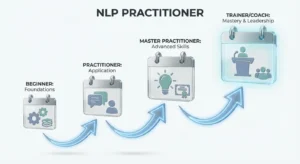Think about your high-performing team—the one known for exceeding expectations, consistently hitting targets, and driving growth. Yet recently, you’ve noticed a shift. While the dedication is still there and the quality of work remains strong, the energy that once propelled them to go the extra mile seems to be waning. The enthusiasm that once fueled their success feels harder to come by.
This isn’t uncommon. Even the most successful teams encounter times when motivation dips. In fact, Gallup reports that only 15% of employees worldwide feel fully engaged at work, a challenge that high-performing teams are not immune to. For these teams, maintaining top-tier performance requires more than just setting objectives; it requires ongoing engagement. And with engaged teams potentially boosting profitability by 21%, there’s a clear value in rekindling and sustaining motivation.
In this article, we’ll dive into strategies for reigniting your team’s passion and maintaining it. These strategies are not about driving harder; they’re about creating an environment where motivation flourishes naturally, making excellence the standard.
Signs Your Team’s Motivation Needs a Boost
Recognizing early signs of waning motivation can help leaders take action before performance dips. Watch for these indicators:
- Decreased Initiative: Team members hesitate to take charge or propose new ideas, relying more on direction than they once did.
- Low Engagement in Meetings: People are less vocal or seem disengaged during discussions, avoiding input or participation.
- Missed Deadlines or Decline in Quality: Consistent quality issues or delayed deliverables may signal burnout or a drop in motivation.
- Increased Absenteeism: Team members start taking more unplanned leave, arriving late, or frequently stepping away, indicating disengagement.
- Lack of Enthusiasm for New Projects: Previously eager team members may show reluctance or lack energy for new tasks, suggesting a decrease in excitement and commitment.
- Minimal Effort in Problem-Solving: If team members are no longer offering creative solutions or actively working through challenges, they may be feeling undervalued or unmotivated.
- Decreased Collaboration: A drop in collaboration, where team members work more in isolation or seem less interested in teamwork, can signal a shift in motivation.
- Negative Attitudes or Complaints: A noticeable increase in complaints, frustration, or negative attitudes may indicate that motivation is slipping and morale is suffering.
Spotting these signs early allows leaders to address underlying issues and restore the team’s motivation, ensuring they remain engaged and productive.
Key Strategies To Keep Team Motivated
High-performing teams are the backbone of any thriving organization. But even the best teams can lose steam if motivation wanes. To keep them firing on all cylinders, leaders need to go beyond the basics and implement strategies that resonate with each team member.
Here’s how you can inspire your high-performing team to stay motivated, productive, and consistently exceed expectations.
Provide Purpose and Meaning
Your team has just wrapped up a major project, hitting every target along the way. But as you move into the next task, you notice their energy is a bit lower. They’re showing up and doing good work, but the spark that once fueled their passion seems dimmer.
This is where a sense of purpose makes a difference. Instead of jumping straight into tasks, take a moment to share the broader mission. Show how their work impacts the company, customers, or community. For instance, if you’re launching a new product, discuss the positive impact it could have on people’s lives. Connecting their daily efforts to a meaningful goal reminds them they’re part of something bigger.
When team members see how their roles contribute to the mission, motivation becomes natural. This sense of purpose doesn’t just reignite passion—it also builds lasting commitment and inspires them to excel.
Foster Autonomy and Empowerment
Your team is skilled, driven, and highly capable, but lately, their enthusiasm for taking initiative seems to be fading. Instead of charging ahead, they’re waiting for instructions—a sign that their sense of ownership may be slipping.
Fostering autonomy can make all the difference. Give your team the freedom to make decisions within their roles, showing you trust their expertise. For example, if they’re managing a client project, let them lead on strategy and execution.
When people feel empowered to shape their work, it brings out their best ideas and builds confidence. With a sense of ownership, team members are more motivated to innovate, solve problems, and fully engage in every project. Empowerment fuels motivation and creates a culture of trust, inspiring everyone to take charge and contribute their best.
Set Challenging but Achievable Goals
When your team is in a steady rhythm, consistently meeting deadlines and maintaining quality, it’s easy for the work to feel routine. They’re performing well, but without something to strive for, their drive can start to fade.
Setting challenging yet achievable goals can rekindle that spark. Give them targets that stretch their capabilities but remain within reach. For instance, if they’re consistently meeting sales targets, raise the bar slightly to encourage new strategies and creativity.
When people face goals that demand their best, it brings a renewed sense of purpose and excitement. Hitting these milestones reinforces their confidence, keeps them engaged, and creates momentum. Reaching for meaningful targets inspires growth and pushes the team forward.
Recognize and Reward Contributions
Your team has just pulled off an impressive milestone—they’ve worked hard, stayed dedicated, and achieved something significant. But if they move straight into the next task without a moment of celebration, even the most motivated teams can start to feel unappreciated over time.
Recognition can make all the difference. Celebrate their achievements, whether it’s a shoutout in a meeting, a personal thank-you, or a team lunch. For instance, if they hit a challenging goal ahead of schedule, acknowledge how much their efforts are valued and why it matters to the bigger picture.
These moments of recognition remind the team that their hard work doesn’t go unnoticed. Acknowledging achievements builds morale, strengthens their sense of value, and inspires them to keep pushing for excellence.
Encourage Ongoing Learning and Development
High-performing teams thrive when they’re continuously learning and expanding their skill sets. Without new challenges, even the most dedicated teams can start to feel stagnant.
Supporting ongoing development keeps motivation high and skills sharp. Offer opportunities for growth, like workshops, online courses, or hands-on projects. For example, if a team member is interested in leadership, consider offering mentorship or a leadership program.
By investing in their learning, you’re not just building skills—you’re building loyalty and engagement. Teams that feel supported in their growth stay motivated, adaptable, and ready to tackle new challenges with confidence.
Create a Positive and Inclusive Work Environment
A positive and inclusive work environment is essential for keeping motivation high and fostering strong team dynamics. When team members feel respected, valued, and included, they’re more likely to bring their best selves to work every day.
Encourage open communication and celebrate diversity by recognizing different perspectives and contributions. Simple practices, like holding regular check-ins, inviting feedback, and encouraging collaboration, can create a supportive atmosphere. If someone has a new idea, make sure they feel safe to share it, knowing it will be genuinely considered.
By building a culture where everyone feels they belong, you inspire loyalty and commitment. An inclusive environment allows creativity to flourish, promotes teamwork, and boosts morale, ensuring that each team member is engaged and motivated to excel.
Provide Constructive Feedback and Coaching
Constructive feedback and coaching are vital for helping team members grow and stay motivated. Rather than simply pointing out areas for improvement, focus on guidance that is actionable and supportive. When feedback highlights both strengths and areas to work on, it empowers individuals to build on what they’re doing well while seeing a clear path for growth.
Offer feedback regularly, not just during formal reviews. A quick, honest conversation after a project can be just as valuable as a scheduled evaluation. If a team member handled a challenge well, acknowledge it and discuss how they can apply those strengths to future tasks. If there’s an area to improve, provide specific examples and suggestions to help them build new skills.
This approach fosters a growth mindset, showing your team that you’re invested in their success. By balancing encouragement with actionable advice, you help each member reach their potential and keep the team focused on continuous improvement.
Promote Work-Life Balance
Work-life balance is key to sustaining high performance and long-term motivation. When team members feel overwhelmed or burned out, their productivity and morale can suffer.
Encourage balance by respecting boundaries and promoting a flexible work environment. Set realistic expectations for workload, and if possible, allow flexibility in schedules to accommodate personal needs. Remind your team that breaks are vital for productivity and creativity. For instance, consider implementing “no-meeting” afternoons or designated days for deep-focus work.
By supporting a healthy work-life balance, you create an environment where team members can recharge and stay energized. When people feel their well-being is valued, they’re more engaged, resilient, and committed to doing their best work.
Involve the Team in Decision-Making
Involving your team in decision-making empowers them and strengthens their commitment to shared goals. When people feel their opinions matter, they’re more invested in the outcomes and motivated to contribute.
Encourage team input on decisions that impact their work. Whether it’s setting project timelines, brainstorming solutions, or exploring new strategies, ask for their insights. This not only brings fresh perspectives but also builds trust and ownership.
When team members see their ideas valued, it fosters a collaborative environment where everyone feels engaged and connected to the mission. Involving the team in decision-making boosts morale, inspires innovation, and creates a stronger, united team.
Embrace a Culture of Transparency
Transparency builds trust and keeps teams aligned with the organization’s vision. When team members have a clear understanding of goals, challenges, and decision-making processes, they feel more connected and confident in their roles.
Share relevant information openly, from project updates to company goals. For example, if there are changes in priorities or upcoming challenges, let the team know as soon as possible. This approach removes uncertainty, fosters honest communication, and encourages questions and feedback.
A transparent culture ensures everyone is on the same page and reinforces a sense of belonging. When teams feel trusted with information, they’re more motivated to contribute, collaborate, and drive toward shared success.
Tips for Implementing Motivational Strategies Effectively

To truly motivate a high-performing team, approach these strategies thoughtfully. Here are some concise tips for success:
- Personalize Recognition and Rewards: Different team members value recognition differently—some prefer public praise, others appreciate private acknowledgment. Tailor your approach to make each person feel genuinely valued.
- Be Consistent and Genuine in Transparency: Build trust by communicating openly, even during tough times. Sharing both successes and challenges reinforces a culture of honesty.
- Encourage Self-Driven Development: Offer resources for growth, but let team members choose their focus. This freedom boosts their motivation and sense of ownership.
- Provide Clear and Purposeful Goals: Ensure that each goal has a clear purpose tied to the larger mission. When goals feel meaningful, team members are more motivated to achieve them.
- Celebrate Small Wins Regularly: Recognize even the small milestones to keep morale high. These celebrations reinforce progress and keep the team energized.
- Listen Actively and Act on Feedback: Show your team that their input matters by actively listening and implementing changes when possible. This creates a sense of partnership and trust.
- Lead by Example: Model the behaviors and values you want to see. When team members see leadership embodying these qualities, it strengthens motivation across the team.
Implementing these tips helps ensure that motivational strategies are impactful, fostering a team culture where everyone feels valued and inspired to excel.
Benefits of a Motivated High-Performing Team
A motivated team doesn’t just achieve goals—they go above and beyond, driving growth and innovation within the organization. Here’s why maintaining high motivation is invaluable:
- Increased Productivity and Efficiency
Teams with high morale are more productive, using their time and energy effectively to tackle challenges and innovate. - Stronger Team Cohesion
When team members feel recognized and empowered, they work together harmoniously, fostering collaboration and unity. - Enhanced Retention and Loyalty
Engaged employees are more likely to stay committed to the organization, reducing turnover costs and strengthening team stability. - Higher Quality of Work
Motivated team members take pride in their work, resulting in better attention to detail, creativity, and higher standards in every task. - Greater Adaptability and Resilience
Motivated teams are more willing to embrace change, adapt to new challenges, and recover from setbacks, ensuring continuous progress. - Improved Customer Satisfaction
When team members are motivated and engaged, their positivity and dedication are often reflected in customer interactions, leading to higher satisfaction and loyalty. - Stronger Innovation and Problem-Solving
A motivated team is more likely to think creatively and approach challenges with fresh perspectives, driving innovation and better solutions. - Positive Workplace Culture
High motivation contributes to a positive environment where team members support one another, reducing workplace stress and creating a more enjoyable atmosphere.
A motivated team brings immense value to any organization, boosting growth, stability, and overall success through their dedication and drive.
Conclusion
Motivating a high-performing team is about more than just offering rewards. It’s about creating a supportive environment where purpose, growth, and recognition are at the core. By implementing these strategies, you can help your team not only meet expectations but exceed them, driving long-term success for your organization.
Ready to take your leadership skills further? Explore our advanced training programs and resources designed to help you unlock your team’s full potential.





